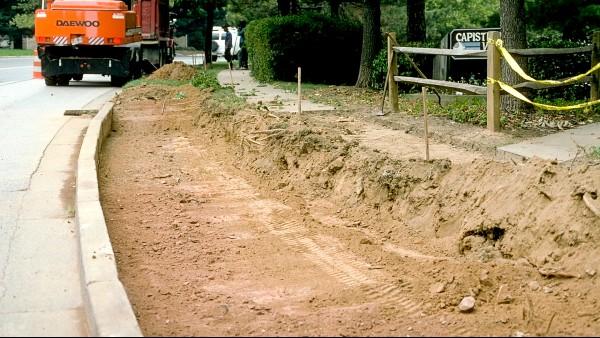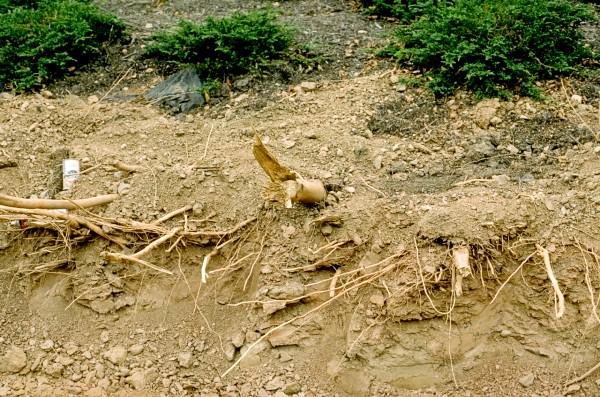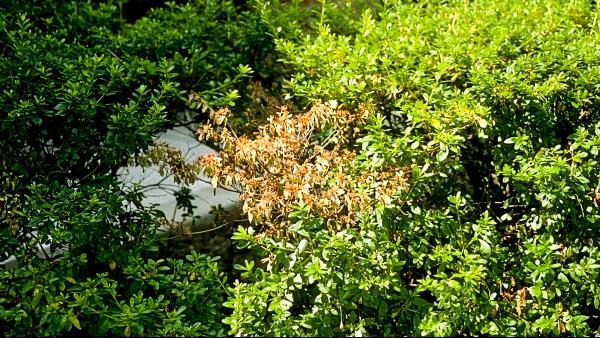Many plants will survive and recover from root damage if the damage does not exceed 1/4 of the total root zone.
- Most of the important feeder roots of trees or shrubs are within the upper six inches of the soil. If damaged, the uptake of water and nutrients is restricted reducing growth.
- Root damage may take months or even years to progress and cause symptoms of decline or death depending on the situation and how much damage occurred.
How roots get damaged
- Roots may be severed by any digging, trenching, or roto-tilling within the root area of established trees and shrubs during nearby grading and construction. Excavation for streets, cables, sidewalks, footings, foundations, drains, driveways, and walls are some common examples of construction practices that can potentially damage roots.
- Roots can be damaged by prolonged environmental or site conditions such as long-term or repeated drought, or excess water, fertilizer, or salt.

Symptoms caused by damaged roots
- A plant may wilt and begin to decline or eventually die. Plants with damaged roots will generally show symptoms over the entire tree or shrub unless the root damage occurred on only one side of the plant. These symptoms usually progress over a number of years.
- Damaged roots can cause buds and twigs to immediately die, weakening the plant. The weakened plant may then begin to show decline symptoms such as lack of vigor and reduced growth.
- Plants with damaged roots show symptoms on the side of the plant where roots have been severed. These include sparse leaves, leaf wilting and browning, and branch dieback.
- Other stress symptoms can include scorch and early fall color.
- Root recovery depends on the depth of the digging and the percentage of the root system affected. After installing a driveway, patio, or otherwise excavating a yard often there are no immediate symptoms in nearby plants. Other stress factors like drought and soil compaction can contribute to the decline of trees and shrubs and it can take a few years for symptoms to appear.


Management
- Prevention is the best management. There is very little that can be done for roots that have already been damaged.
- Consider careful transplanting of plants, if size allows, to a temporary holding area then replanting them when construction or grading is completed.
- Keep plants watered.
- Prune out any branches or stems that die as a result of the damaged root system.
